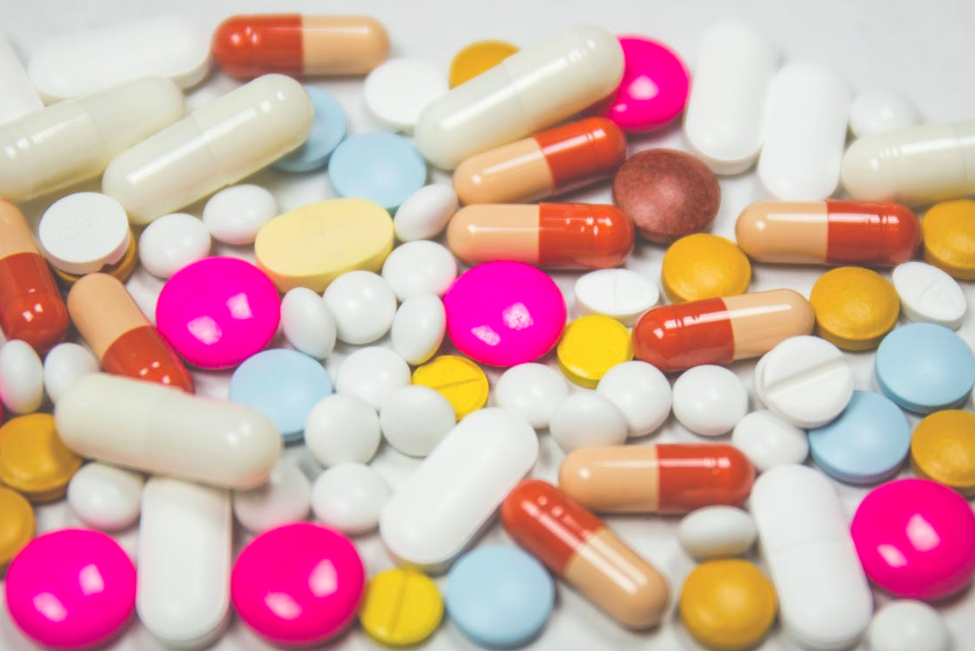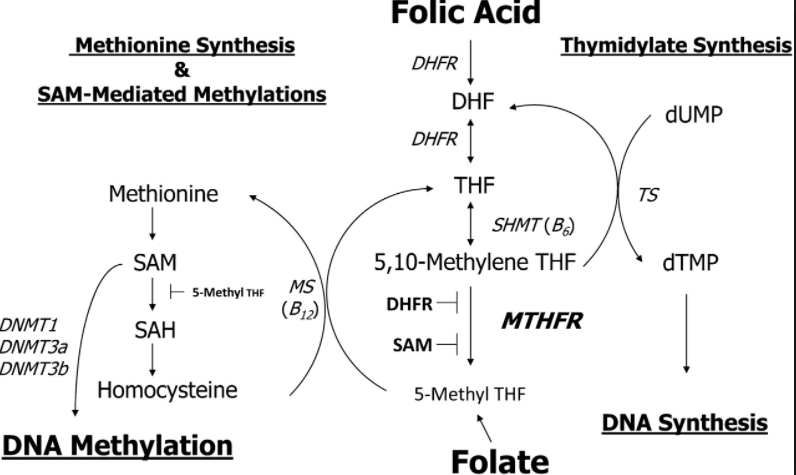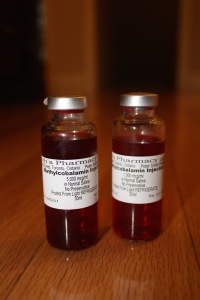
by Dr. Talia Marcheggiani, ND | Nov 27, 2022 | Anxiety, Autoimmune, Food, Health, Nutrition, Supplements, Vitamins
Did you know it can take modern medical research 17 to 20 years before it reaches mainstream medical practice?
Sometimes it takes us time to be sure and this means repeating study results over and over again with various populations. Sometimes, however it can take time to instill new consciousness into our habits and routines. We humans are creatures of habit and prone to bias. It can he hard to change our minds and change our ways, which can lead to even the most well-meaning and intelligent doctors making outdated recommendations or relying on old science.
For instance, have you ever been told (or know someone who’s been told) to avoid eggs for your cholesterol (facepalm). What about low-fat diets? Ridiculous as it may seem, this is still being said to my patients.
You get my point, right?
This brings me to the topic of supplementation for two nutrients that we North Americans are prone to deficiency in: Vitamin D and Iron.
Let’s start with iron.
Iron:
Is needed to make hemoglobin in red blood cells. It shuttles oxygen around the body. We use that oxygen for cellular respiration (to make energy) in our mitochondria.
Low iron can lead to anemia (lack of red blood cells, hemoglobin and hematocrit).
Low iron can cause symptoms such as: low energy, low mood (dopamine), low thyroid function, feelings of cold, racing heart, anxiety, dizziness, weakness, hair loss, dry and pale skin, low stamina and exercise tolerance as the body is not able to move oxygen around the body to make energy.
So, what do you do when your iron is low? Supplement, right? Normally, I would have said yes.
That’s where things have changed for me.
So, I noticed that even if I recommended gentle iron supplements (iron bisglycinate or heme iron), patients wouldn’t take them. Even if they didn’t cause constipation (which the conventionally prescribed ferrous fumarate is infamous for) or other gastrointestinal symptoms, patients had a certain aversion to iron supplements that was hard to explain.
Further, sometimes they would raise blood iron levels and sometimes they wouldn’t. Sometimes they would raise levels and then levels would fall back down again.
It’s interesting to note that iron is the most abundant element on the planet, making up 35% of the Earth. It is fortified in commonly eating foods like bread and cereals. The problem is not iron intake, it is iron metabolism, or the way that iron is moved throughout the body.
We can have 10 times the amount of iron lodged in our tissues than is present and measured in our blood. And this isn’t good. Iron interacts with oxygen and causes oxidation (or “rusting”). This can cause inflammation of our tissues, like gut tissue. It can negatively impact our livers. We want iron safely stored in hemoglobin.
In order to get iron out of our tissues we need an enzyme call ceruloplasmin, which depends on the element copper. Copper is needed to get iron out of the tissues and into the blood in the form of hemoglobin so that it can be used to move oxygen to our mitochondria to give us energy.
Now, we also need preformed vitamin A (retinol, only found in animal foods) to load copper into ceruloplasmin.. (to get iron into hemoglobin so that oxygen can get to our cells, it’s like that song “The Farmer takes a wife”, haha). You get the picture.
Put simply:
Energy– > oxygen in mitochondria –> hemoglobin (with iron) –> requires ceruloplasmin (vitamin A and copper).
So, the key to supporting iron levels and energy production is not more iron! It’s the nutrients that help iron work properly in the body. Copper and Vitamin a, which are found (along with highly absorbable heme iron) in Beef Liver!
Interestingly enough Whipple, Minot and Murphy were awarded the Nobel prize in physiology and medicine in 1934 when they discovered that beef liver cured anemia and pernicious anemia (B12 deficiency).
Beef liver is rich in choline (supports the liver, especially fatty liver, cell membranes, brain health, digestion, gallbladder function, mood and memory), zinc, B vitamins and hyaluronic acid.
Very often we find that we are implementing too many interventions and the key is to go back to our roots: to nature and ancestral practices to solve our problems. Sometimes we don’t need more technology, but more nature. An ancestral food that few of us consume anymore (at least not regularly). Good old beef liver. I will tell patients to consume lightly cooked grass-fed liver or take it in a supplement form (which is what I do).
For more on this topic, check out my podcast episode on it!
This brings us to Vitamin D.
Vitamin D is actually a hormone. It regulates 900 genes in the body that are involved in bone health, immune function (supporting low immune function and autoimmunity) and mood.
We humans get vitamin D from the sun. Sun hits cholesterol in our skin and our skin makes vitamin D. This is the best way to get vitamin D. Therefore in sunny climates, get sun! Clothing and sunscreen blocks vitamin D, fyi. About 20 minutes a day of direct sun on 20% of your skin (t-shirt and shorts), can generally give you your daily vitamin D.
However, in the winter, our skin does not have access to sun exposure and we don’t make vitamin D. So what do we do? Well, up until recently I would have told you to take a vitamin D supplement, in the form of drops (as D is fat-soluble) to make sure that your blood levels of 25-hydroxyvitamin D (25-OH D) is >125 nmol/L.
However: vitamin D requires magnesium to be activated in the body (and most modern humans are notoriously deficient in magnesium). Sometimes low blood levels of D are actually an indication of low magnesium.
Further, high levels of supplemental vitamin D also deplete levels of vitamin A (or retinol). Vitamin A and vitamin D must be taken together as they are biological partners. In fact, one of the things that sunlight does is activate preformed vitamin A in the skin as well as activate vitamin D synthesis. Vitamin A helps activate Vitamin D receptors (and remember that vitamin A is responsible for iron metabolism as well).
The good news is that both vitamin D and vitamin A are found together in nature in Cod Liver oil (along with the antiinflammatory omega 3 fish oils EPA and DHA). So, I am more frequently recommending Cod liver oil as a vitamin D source along with magnesium to help support vitamin D metabolism in the body. We need to get vitamin D from a supplemental source in the winter if we’re not getting enough sun, however the precautionary principle will tell us that historic supplementation (what our Northern ancestors might have practiced) contains lots of wisdom.
Nutrients don’t work in isolation. They work in networks (just like our hormones and immune cells). We need copper and Vitamin A to regulate iron. We need magnesium and vitamin A to regulate vitamin D.
Isolating and supplementing with single vitamins and minerals may be indicated for some patients (going deep and narrow, particularly for people with pronounced and specific deficiencies), however in general I’m moving to a more holistic and ancestral prescribing practice with most patients when appropriate–this is where I see the current evidence pointing: to a more holistic vs. reductionist approach.
That being said, everyone is different and so all prescriptions are highly individualized. There are some people who these supplements are not indicated for or appropriate for and so alternatives are prescribed.
The reason my practice is built around 1:1 visits is because this is where the magic lies. In individualist prescribing. You are not the same as your neighbour. You have specific needs and considerations for your health.
I hope that makes sense. The world of nuritition is a fascinating subject. In order to stay on top of the current best practices it is my responsible to be on top of the research (sifting through the vast arrays of information) and flexible enough to pivot my approach when necessary.
I don’t practice the same way I did when I graduated. Or even the exact same way I did last year. It is important to keep things fresh and current and not let ego stand in the way of changing things for the better.
What do you think? Do you take beef liver and cod liver oil? How’s that been going for you?

by Dr. Talia Marcheggiani, ND | Nov 3, 2017 | Anxiety, Autoimmune, Detoxification, Diet, Endocrinology, Estrogen Dominance, Fertility, Genetics, Hormones, Mental Health, Nutrition, Vitamins
 Is your multivitamin or B-complex making you sick?
Is your multivitamin or B-complex making you sick?
Take a look at the label on your multivitamin or B-complex and see if it contains “folic acid”.
Folic acid is often used interchangeably with “folate”, which is a vitamin needed for DNA synthesis and repair.
Every time our bodies make new cells (which is all the time), we need folate to move that process along.
Because very few of us North Americans get enough folate from leafy greens, folic acid, a synthetic precursor to folate, has been added to grain products, to “fortify” them.
Folate deficiency in pregnant women can lead to neural tube defects. Therefore making sure that your body has enough folate, especially if you’re pregnant or planning to conceive, is essential.
However, folic acid, the synthetic vitamin is NOT the same as the folate (look at the bottom of the chart below, another word for folate is 5-methyltetrahydrafolate, or 5-MTHF) that our bodies use for cell division and DNA synthesis.
As you can see by the picture, folic acid needs to go through several stages of transformation before it can be of any use to the body.

All of us are really poor at converting folic acid to DHF (first step in the pathway). This step is faster in rats. In humans, it’s abysmally slow.
This means we take folic acid from supplements and fortified grains and slowly pass it through the narrow DHFR sieve that all of us are born with. This slowly transforms our synthetic folic acid into DHF.
The same DHFR enzyme must take DHF and turn it into THF. Two steps: folic acid –> DHF –> THF. So far, none of these products is useful.
3 steps and 2 enzymes later, our body makes a product called 5,10 methylene THF, or folinic acid, which can be used for DNA repair and synthesis.
After that, an enzyme called MTHFR turns folinic acid into folate (5-MTHF). And yes, MTHFR does remind you of the word you’re thinking of!
About 40-60% of us are poor at the last step, making 5-MTHF, which results from a slow or completely impaired MTHFR gene which has trouble producing a fully functioning MTHFR enzyme.
Slow enzymes mean very few of us are going to take the folic acid from foods and cheap vitamins, and turn them into methylfolate.
Methylfolate (remember, NOT folic acid), is needed for important chemical reactions called “methylation” reactions.
Methylation is needed for with detoxification, liver function, managing inflammation, hormone production and recycling, and producing neurotransmitters. Research is establishing a connection between MTHFR gene mutations and mental health conditions, autoimmune conditions and heart disease, among other common health complaints.
Folic acid, when added to supplements isn’t just useless, however.
When it can’t be broken down (and remember, all of us are slow at the first stop, some of us just plain can’t perform the last step), it builds up in tissues, and can block ACTUAL methylfolate action.
It can also trigger inflammatory reactions.
Not good.
Most multivitamin and B complex brands at health food stores contain cheaper forms of B vitamins. Companies use folic acid and a cheaper, synthetic form of B12, called cyanocoblamin, when making products to cut costs.
This doesn’t mean you have to shell out a lot of cash for quality B complex vitamins, it just means you need to be smart about the B-complexes you buy.
B-complex vitamins can be useful for those who experience inflammation, hormone imbalances and chronic stress. We tend to use more B-vitamins, which are water-soluble, when stressed, and when on certain medications, such as birth control pills. Supplementing in these cases can be extremely helpful for boosting energy and mood, while lowering symptoms of PMS and inflammation, among other things.
Most of the patients who come into my office already on a B complex are on a form that contains folic acid. At best, their body is working harder than needed to convert this synthetic vitamin into something useful. At worst, this product may be causing them harm.
The first thing you can do, is check your multivitamins and B-complex products and see if they contain “folic acid” or “cyanocobalamin”. If so, you can toss them.
You can also consider getting tested to see if you have an MTHFR mutation. Keep in mind that naturopathic doctors who are registered in Ontario, Canada cannot recommend or interpret genetic testing.
Next, you can reassess your diet. Folic acid is also added to enriched grains. Those who are particularly sensitive to folic acid, may experience a worsening of inflammatory symptoms and mental health issues when consuming high amounts of these foods.
Also, eat plenty of leafy green vegetables, which DO provide your body with a useable form of folate, among their many other health benefits.
Finally, if you’re considering getting pregnant, have a naturopathic doctor assess your prenatal vitamins to tell you if the form of folate you’re taking is appropriate for you.

by Dr. Talia Marcheggiani, ND | Dec 8, 2014 | Diet, Health, Medicine, Mental Health, Nutrition, Stress, Vitamins, Weight Loss
 One of my favourite vitamins, after B6, is vitamin B12! (Magnesium is my fav mineral). I have recently bought 1000 mcg and 5000 mcg bottles of injectable methylcobalamin for my clinic. The vitamin contains no preservatives or additives. $15 gets you a quick burst of energy in your deltoid muscle.
One of my favourite vitamins, after B6, is vitamin B12! (Magnesium is my fav mineral). I have recently bought 1000 mcg and 5000 mcg bottles of injectable methylcobalamin for my clinic. The vitamin contains no preservatives or additives. $15 gets you a quick burst of energy in your deltoid muscle.
Here are 12 things you should know about this snazzy, red vitamin.
1) Vitamin B12 is a water soluble B vitamin. It is excreted through the kidneys.
2) It is found naturally in animal products (meat, eggs, fish, dairy). Vegans do not get this from their diets and need to supplement.
3) Excess amounts of B12 are stored in the liver for up to 10 years.
4) B12 deficiency can result in neurological symptoms such as neuropathy: numbness and tingling, depression, dizziness, anemia and fatigue. Suboptimal levels can result in fatigue.
5) B12 absorption can be impaired in the elderly, those who have had gastrointestinal surgery and those with low stomach acid. It requires intrinsic factor, excreted in the stomach to be absorbed in the intestine.
6) B12 is cobalamin. Supplements of B12 come in three main forms: cyanocobalamin, hydroxycobalamin and methylcobalamin.
7) Methylcobalamin is the active form of B12, which is easily absorbed and passes the blood brain barrier, making it an effective treatment for depression and mental fatigue. Cyanocobalamin must be converted to hydroxycobalamin, which is then converted to methylcobalamin. Many people have inadequate enzymes to convert cyano and hydroxycobalamin to the active form. Therefore, supplementing with methylcobalamin is the best option. It also helps support methylation, which our bodies need for detoxification and mental functioning, among a myriad of other biological pathways. Getting a dose of methylcobalamin is like a 2-for-1 deal: you get a bioavailable form of vitamin B12 AND a methyl donor. Who wouldn’t want to get in on that?
8) B12 levels of under about 200 umols/L of blood is termed a B12 deficiency, where neurological symptoms begin to appear. However, for health, naturopathic doctors prefer B12 levels to be at least above 600 umols/L of blood, ideally 1000. Symptoms are often used as the primary guiding force for B12 supplementation. Some genetic variations result in impaired absorption of B12, resulting in high blood levels, but low levels available to cells. Therefore, testing serum B12 is not a very reliable marker of B12 status in the body. Other markers such as homocysteine and methlymalonic acid can help tell more of the story, or you can choose to supplement and listen to your body, seeing how B12 injections make you feel. B12 is non-toxic and there is no known upper limit.
9) Injections of B12 can be used to treat depression, obesity, weight gain, fatigue, fibromyalgia, autoimmune disease, multiple sclerosis and dementia among other conditions. In most people, B12 injections provide a welcome energy boost. A series of shots of 5000 mcg of methylcobalamin is a powerful treatment for depression; B12 helps the body make serotonin, the happy neurotransmitter.
10) People taking Metformin (a glucose-lowering medication for type II diabetes) should supplement with B12 as this medication depletes the vitamin.
11) Vitamin B12 is required to make red blood cells. Deficiency can cause anemia.
12) B12 also keeps homocysteine low. High homocysteine is an independent risk factor for heart disease and can cause inflammation in the body.
Contact me to learn more about getting B12 injections and injecting some energy into your holiday season!





